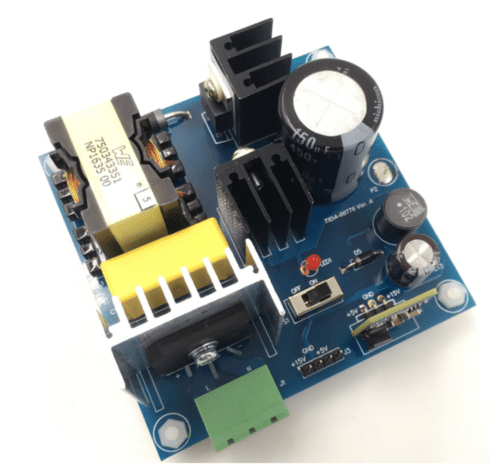The reference design offers a tested supply platform for PFCs, ensuring efficiency and robust output protection for appliances, making it versatile and reliable.

Major appliances like refrigerators and washers often use brushless DC (BLDC) or permanent magnet synchronous motor (PMSM) drives with three-phase, pulse-width modulation. These motors usually range from 0.25 HP (186 W) to 5 HP (3,750 W) in power. Controlling the stator currents in these motors requires an electronic drive. A standard electronic drive includes a three-phase inverter power stage, a microcontroller unit (MCU) for the motor control algorithm, sensors for motor voltage and current for closed-loop speed or torque control, a gate driver for the inverter, and a power supply for the gate driver and MCU.
The TIDA-00776, a reference design from Texas Instruments (TI), is a 350-watt power factor regulator tailored for refrigerators and other appliances where cost-effectiveness is key. The design employs a continuous-conduction-mode (CCM) boost converter, utilizing Texas Instruments’ UCC28180 power factor correction (PFC) controller. This controller comes equipped with essential and recommended protections. The hardware design of TIDA-00776 has been tested and confirmed to meet the IEC61000-3-2 (2014) current harmonic standards for household appliances.
This reference design offers several notable features. Firstly, it offers a thoroughly tested supply platform for front-end PFCs, catering to power level needs for appliances with a rating of up to 350 watts. Secondly, it boasts an impressive peak converter efficiency of up to 98.2% when subjected to high line input, facilitating a competitive high power density and enabling a compact heat sink design. Lastly, it ensures robust protection for the output supply, safeguarding against conditions such as output overcurrent, output overvoltage, and output under voltage failures.
This device boasts a range of impressive features. It supports a universal input voltage range from 90 to 265 volts AC. Furthermore, it complies with the IEC 61000-3-2 Class D requirement concerning current harmonics. The conversion efficiency is exceptional, exceeding 98.2% under high-line conditions. It operates at a switching frequency of 135 kHz and comes in a compact PCB form factor measuring 82 mm × 80 mm × 25 mm. It also offers enhanced dynamic response in scenarios involving output overvoltage and undervoltage.
Additionally, it exhibits minimal standby power consumption, drawing less than 300 milliwatts. The device incorporates soft overcurrent and cycle-by-cycle peak current limit protection. Moreover, it features an integrated bias power supply delivering 12 volts DC and 5 volts DC with a 3-watt output. Finally, it can operate within an ambient temperature range from -20 °C to 55°C.
This versatile device finds applications in a variety of contexts. It can be utilized in appliances such as refrigerators and freezers, as well as power tool chargers and washing machines. Furthermore, it is well-suited for applications involving Brushless DC Motors (BLDC) appliances with a power rating below 350 watts, demonstrating its adaptability across different electrical and electronic systems.
TI has tested this reference design. It comes with a Bill of Material (BOM), schematics, gerber file, etc. You can find additional data about the reference design on the company’s website. To read more about this reference design, click here.








